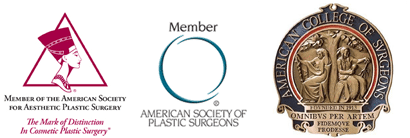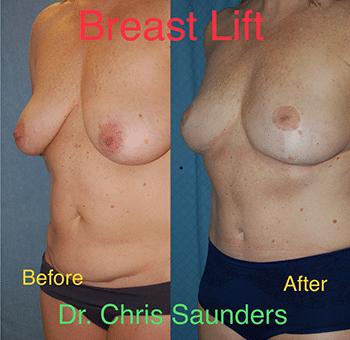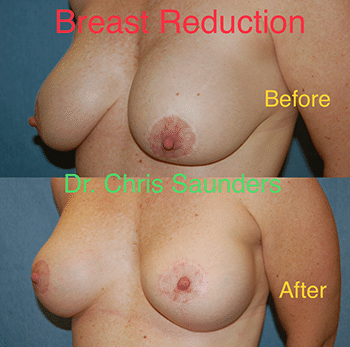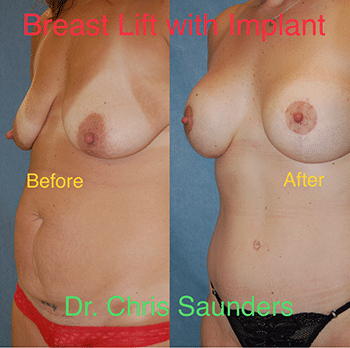Breast lift and breast reduction are surgical operations designed to make the breasts more attractive, perky, and elevated. They can be tailored, fashioned, and created to give you the shape, volume, and appearance that you want for your breasts. The operations are extremely safe and have very high patient satisfaction. This overview article will educate you on the essential features of these cosmetic breast procedures so you become more knowledgable and educated.
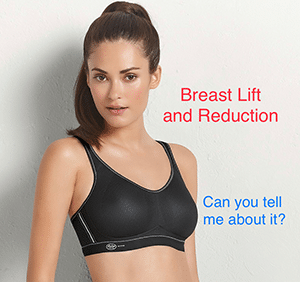
For those interested in more information and detail about this topic or others, please go to my educational writings section. These are more in depth and focused. They will provide the interested patient with additional information that will help you learn and understand all of the essential and important features of these breast operations. The link takes you to the main menu, please scroll down to the topic of interest.
Overview:
There are medical words for these operations. Breast lift operations are called a mastopexy and breast reductions are called a reduction mammoplasty. These are performed on an outpatient basis to give a lifted, firmer, and more attractive appearance to the breast. It is common to have significant improvement in back and neck pain for women who are suffering from these problems. Smaller and higher nipple locations are often other major goals of the operations. Women can choose changes in both shape and volume of the breasts. By tailoring and personalizing the operation to your anatomy and goals, I can help you achieve the breast size and shape that you want.
How is it done?
The operations use different incision patterns on the breast to achieve the elevation and reduction. Depending on the degree of hanging, incisions will be made to create the perkier look and enhanced appearance. Women with small degrees of hanging need smaller incision patterns than those with breasts that hang more. I close all my breast incisions with delicate, tiny, and meticulous plastic surgery stitches. This maximizes our chance of having the best scars that fade the most.
Shape Versus Volume:
Both operations are designed to enhance shape. Whether you have a lift or a reduction, the surgical goals and results are to give you a better shape that I have described above. An important point is that you get to choose the change in volume that you want. There is more of a choice with a lift than a reduction. The volume means the size of the breast. With a lift, you can chose the size change. You can choose to go down in cup size just a small bit or you can choose to go down more. Small decreases in breast size might just be a 1/4 cup or 1/2 cup. Some might choose to go down in size a cup or more. In contrast to a lift, with a reduction we tend to always decrease volume a larger amount. The goal is a more proportional breast size to match a women’s body.
Recovery:
The operations range in length from 1 -1/2 hours to 3 hours depending on the specifics of your anatomy and your goals. You leave the surgical center in a sterile bandage that is applied by me at the completion of the operation. You shower 72 hours after the procedure and then switch to a sports bra. The sports bra should have no wire, padding, or built in cups. It can have a zipper in the front, but this is not necessary.
Pain, Swelling, and Bruising
Most women are surprised at the small amount of pain afterwards. In my opinion, most patients will be reasonably comfortable and will be able to resume desk jobs and light activity in 3-5 days. However, one week or two weeks off from work is a nicer amount of time. Bruising and swelling are normal parts of the recovery from these operations. The pain, swelling, and bruising gradually resolve or go away. The majority of this will resolve over the first 2-3 weeks. However, it can take several months for all the swelling to go away.
Risks:
During the consultation I will review your procedure and risks in detail. The risks of the operations are considered low. They include, but are not limited to, infection, bleeding, scars, and shape issues. It is normal to have slightly different breast shapes after these operations. I measure things at surgery to the last millimeter. However, it should be considered a realistic expectation that breasts will be slightly different afterwards. Other risks include nipple sensitivity loss or the inability to breast feed. Most women however do not have the problems.
See What Our Patients Are Saying…
“There are not enough flowers in the gardens or chocolates in the world to thank you enough. Your surgery skills are unbelievable and are matched by your kindness and warmth. As soon as I met you, I knew that I had the best right in front of me….” – B.A., Chadds Ford, Pennsylvania
Results:
Satisfaction and results tend to be very high. For women who are having back or neck pain or shoulder grooving, significant improvement and satisfaction tend to be in the 95-98% rate. These operations do not involve breast implants. Implants are used for women who want to go larger or fuller. Breast lifts can be done with implants at the same time to give a rounder appearance or a fuller look, for those interested. Lifts and reductions give a natural shape with less fullness at the top of the breast compared to people who get implants. For those interested in a rounder appearance at the top of the breast, consideration should include a discussion about adding breast implants at the same time as the mastopexy or lift.
Schedule a Consultation with Dr. Saunders!
Breast lift and reduction operations are some of the most frequently performed operations by me and by plastic surgeons in the county. Satisfaction and results tend to be very high. The procedures make the breasts higher, perkier, and more attractive in shape. To learn more or to determine whether you are a candidate for the procedure, please schedule a consultation today! Call 302.652.3331 for my Wilmington, DE office, or 610.459.1559 for my Chadds Ford, PA office. You can also click here to send my office an Email Contact Form. During our one-on-one appointment, I will review your surgical options, explain the procedure, recovery, and risks in detail.

